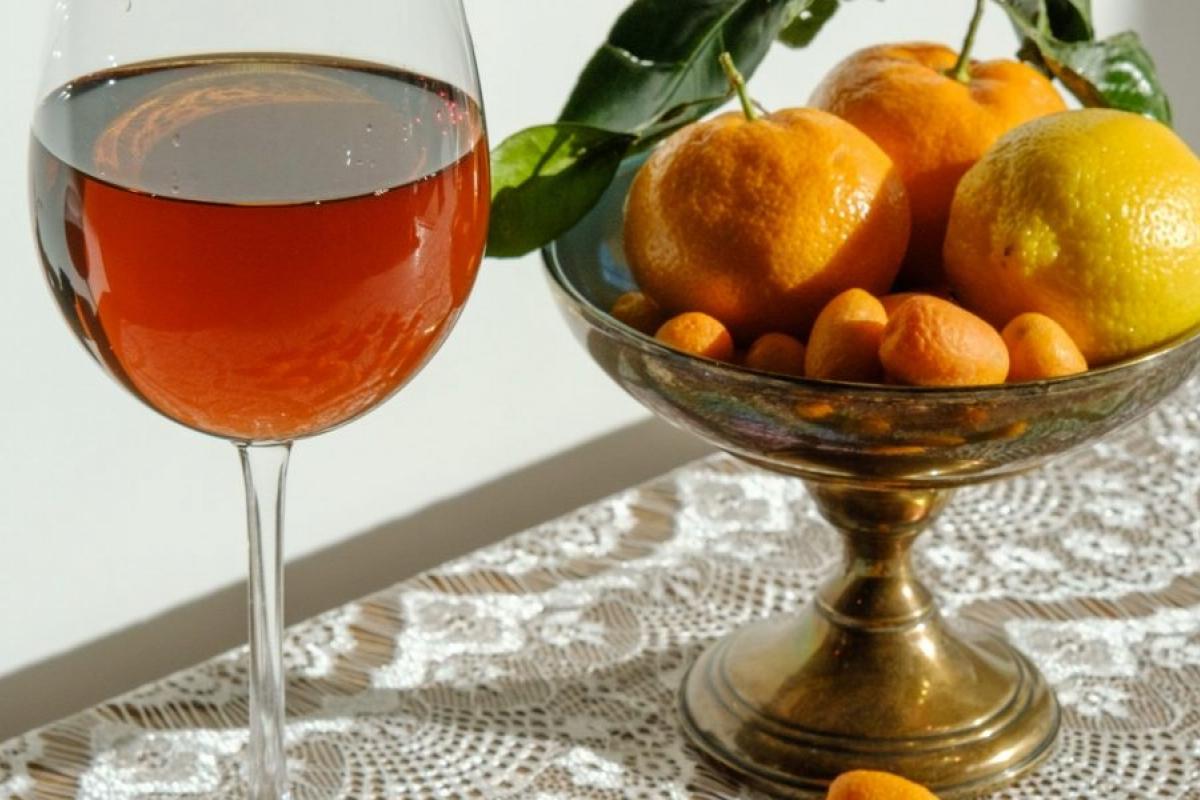
Orange and Rosé Wine Tasting - Discover Your Spring Favorite
Presented by WineNote - The Art of Wine Appreciation
The season for indulging in rosé wine is just about to break out in the entire country. We Revel the different shades of pink and orange at cafes, in our gardens and parks, and we celebrate the clear spring light with the fashionable art of drinking this year's first fresh wines in funky colors. Which wines actually suit your taste, because is a rosé just a rosé, and what happens when we compare Rosé and Orange?
Exactly which color appeals to your taste, you can test on Saturday, April 25th, between 7 pm and 10 pm, when Wine Note invites you to a wine tasting. It takes place at Frederiksberg Vinhandel Frederiksberg Allé 25.
What is Rosé?
Most wine snobs might think that rosé is not real wine, but dear reader, do not listen to them, for in recent years, more and more winemakers have started taking the Rosé discipline seriously. If you have chosen your wine merchant carefully, there is therefore a good chance that there are plenty of tasty pink drops on the shelves. Drops that express what we eagerly want to taste here in the spring, namely freshness with an expectation of summer nights, fresh strawberries, and outdoor coziness.
Rosé wine has rarely been thought of as anything other than something to drink in the heat when the regular reds become a bit too heavy. The motherland of rosés lies in the French Provence and in northern Spain, where the dishes smell of fish, bread, and wild herbs. So, a place where life is lived lightly and informally. It's a lovely place, but also a place that every year gets filled with tourists thirsting for rosé and light fish dishes. This cocktail of mass tourism combined with sun and summer can often cause the quality to lag, as the demand for winegrowers can seem endless.
Fortunately, wines with beautiful pink hues are not solely a French or Spanish affair. Wines in this genre are made all over the world, and although there are few and far between, it is possible to find fantastic rosé wines everywhere. In other words, if you hunt for your rosé long enough, you can find wines that fully live up to beautiful red and white easy-drinking wines, and that give delightful spring feelings throughout the body.
What is the Recipe for Rosé?
"Some believe that rosé is made by mixing white and red, and that will certainly also give a wine with a rosé color, but that's not how rosé wine is made. There are 2 prevailing methods of making the wine, where one involves letting the juice have contact with the grape skins from red grapes for a relatively short period of time. The shorter, the lighter the wine. In the other method, the juice is pressed directly from the red grapes, resulting in light and fresh wines. When drinking rosé, it should be consumed fresh. There is no aging potential in the wine, so you should make sure you drink the wine in the latest vintage, at a stretch from the vintage before. That means that the good wines now are from 2017 and 2018. Also, it is important to remember that rosé can also be enjoyed with bubbles. In that area, I believe that the pink Cavas are the most interesting. Not only do they have better fruitiness than their cousins from Champagne, but the price also fits much better for this type of wine, which in my opinion should never cost more than at most 200 kroner per bottle." Rosé is for spring and summer. It's light cotton dresses and shorts. It's the children playing in nature while the adults enjoy themselves - for example, with a bottle of rosé.
What is Orange?
There are probably some people who have scratched their heads when a bearded sommelier from one of the city's so-called hipster restaurants offers their customers orange wine. If one has not encountered the concept before, one might think that it's the plague Aperol, which has dramatically taken over the Danish summer landscape, but no!! It's about a completely new corridor in the wine landscape that in recent years has emerged from the preachers of the sensitive hands of the natural wine movement. You can write pages and pages about production processes when making orange wine, but the most important thing is actually how they taste. The first thing you'll probably think about is that it's a completely different type of wine than anything you've tasted before. The wine is not crisp and fresh like a regular white wine, and there can be something aged about the experience the first time you stick your nose in the glass. On the other hand, the wine can offer a wide range of other qualities. The color is naturally an orange that can be more or less intense in expression. In the nose, you often get ripe pear, quince, jackfruit, fresh hazelnuts, and even juniper berries and often something floral. In the mouth, the wine has a drying effect from tannic acid, lots of fullness, and impressions of dried fruit and very ripe grapefruit are added. Orange wines usually have a somewhat longer aftertaste in the mouth than regular white wines.
What is the Recipe for Orange?
The phenomenon follows a bit the same logic as the one used when saying that all the vitamins and half the flavor are in the peel of vegetables. So why peel them when all the good stuff is there. When this logic is followed in making white wine, the result is orange wine. This happens because the colorless (the white) in a white wine arises precisely because the juice has minimal contact with the grape skins. The overall definition of orange wine is that the skins lie and soak in the juice in the same way as you know it from red wine made from blue grapes. In the orange universe, the same thing happens but with green grapes, which despite their green color also have a little red and brown pigment in the skins. Some of the brown color can also come from the oxidation of the fruit in the same way as everyone knows it from the brown that spreads over apple pieces when they lie for a while on the plate. Both give a distinct taste to the wine. There are, of course, many variants, from the almost tight to the very oxidized, but all offer a different and often exciting experience that must be tried if you are a wine enthusiast. For some, a love affair with orange wine even turns into a relationship with the only one.
Address: Frederiksberg Allé 25
Read more: Frederiksbergvinhandel.dk






